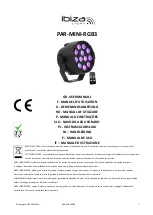
HELIODOR AMP OVERDRIVE
6
BUILD NOTES
Using SMD JFETs
The 2SK117-GR JFET is no longer available in through-hole format. This PCB uses a hybrid through-
hole/SMD outline for each JFET. An extra “G” (gate) pad is included to accommodate surface-mount
devices without the need for adapters.
SMD JFETs should be oriented as follows:
All surface-mount JFETs use the same pinout, so this configuration will fit any type that we’re aware of.
However, always check the datasheet if you’re uncertain—they’re difficult to desolder.
Using through-hole adapters
If you’re not confident in your ability to work with surface-mount parts, Aion FX offers
(the SMD version of 2SK184-GR and 2SK117-GR) that come pre-soldered to adapters for use
in through-hole designs. These are from the same manufacturer as the ones used in the original BOSS
pedals and will perform identically.
Using old-stock transistors
Toshiba has not manufacturered through-hole transistors and JFETs in many years, but it’s still possible
to find the 2SK184-GR and 2SK117-GR as well as the four types of BJT transistors used in the original.
However, be aware that these follow the Japanese pinout conventions, whereas the PCB layout is set up
for USA conventions since there are a lot more widely-available substitutes in this format.
For those using original Toshiba through-hole JFETs or BJTs, an extra pad has been added to the left of
the transistor outline (drain for JFETs, emitter for BJTs) so that the Japanese pinout can be easily used
without needing to twist the legs around. In both cases, the transistor should be rotated 180 degrees
from the silkscreen and shifted over one pad, as shown:
C8 capacitor
C8 (47pF) is not present in the original unit, but it’s good practice to have a small-value feedback
capacitor when dealing with these types of gain stages to prevent high-frequency oscillation. The OD-2
and BD-2 do use this capacitor in similar circuitry.
BJT
JFET





























